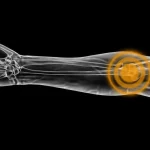Understanding Different Types of Ultrasound Scans for Pelvic Health
In today’s modern world, medical advancements have made it possible for doctors to diagnose and treat various health conditions with precision. One such diagnostic tool that has revolutionized the field of medicine is ultrasound scanning. Ultrasound scans have become an integral part of pelvic health assessments, providing valuable insights for both diagnosis and treatment planning. In this article, we will explore the different types of ultrasound scans used in pelvic health and their significance in patient care.
- Transabdominal Ultrasound Scan
The transabdominal ultrasound scan is a commonly used diagnostic tool to assess pelvic health. This non-invasive procedure involves the use of a handheld device called a transducer, which emits high-frequency sound waves. The waves penetrate through the abdominal wall and produce images of the pelvic region on a monitor. This type of scan is particularly useful for examining the uterus, ovaries, and bladder.
During a transabdominal ultrasound scan, the patient lies on a bed while a gel is applied to the lower abdomen to facilitate the transmission of sound waves. The transducer is then moved gently over the abdomen, capturing detailed images of the pelvic organs. The process is painless and carries no significant risks.
- Transvaginal Ultrasound Scan
The transvaginal ultrasound scan is another valuable tool in pelvic health assessments. This procedure involves the insertion of a specially designed transducer into the vagina, which provides a close-up view of the pelvic organs. It is especially useful for examining the uterus, fallopian tubes, and ovaries.
This type of ultrasound scan is typically performed with an empty bladder to allow better visibility of the pelvic organs. The transducer, covered with a sterile sheath, is inserted into the vagina and gently moved to capture detailed images. While some women may find the procedure slightly uncomfortable, it is generally well-tolerated and poses no significant risks.
- Doppler Ultrasound Scan
Doppler ultrasound scans are specifically designed to assess blood flow within the pelvic region. By using the Doppler effect, which measures changes in sound wave frequency, these scans provide valuable information about the blood vessels supplying the pelvic organs. Doppler ultrasound scans are commonly used in cases of suspected pelvic congestion syndrome, ovarian torsion, and uterine fibroids.
During a Doppler ultrasound scan, the transducer is moved over the pelvic area, focusing on specific blood vessels. The images produced show the direction and speed of blood flow, aiding in the detection of any abnormalities. This non-invasive procedure is painless and carries no significant risks.
- 3D/4D Ultrasound Scan
3D/4D ultrasound scans have gained popularity in recent years, offering more detailed and realistic images of the pelvic organs. This advanced imaging technique provides three-dimensional images of the pelvic structures, allowing for a more comprehensive assessment. 4D scans, on the other hand, provide real-time moving images, offering a glimpse into the dynamics of the pelvic organs.
These scans are particularly useful for detecting structural abnormalities, such as uterine malformations or congenital anomalies. They can also be utilized to monitor fetal development during pregnancy. Although 3D/4D ultrasound scans are generally safe, their routine use is not recommended unless specifically indicated by a healthcare professional.
Conclusion
In conclusion, understanding the different types of ultrasound scans for pelvic health is crucial in providing optimal patient care. The transabdominal ultrasound scan, transvaginal ultrasound scan, Doppler ultrasound scan, and 3D/4D ultrasound scan all play essential roles in diagnosing and managing various pelvic conditions. These scans offer valuable insights into the structure, blood flow, and overall health of the pelvic organs.





